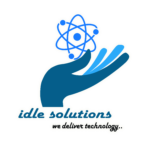AI, or artificial intelligence, is a branch of computer science that deals with the creation of intelligent agents, which are systems that can reason, learn, and act autonomously. AI research has been highly successful in developing effective techniques for solving a wide range of problems, from game playing to medical diagnosis.
AI is already having a major impact on the world, and its importance is only going to grow in the future. AI is being used to develop new products and services, improve existing ones, and automate tasks that are currently performed by humans.
Here are some examples of how AI is being used today:
- Self-driving cars: AI is used to develop the self-driving capabilities of cars.
- Virtual assistants: AI is used to develop virtual assistants such as Siri and Alexa.
- Medical diagnosis: AI is used to develop systems that can help doctors diagnose diseases.
- Recommendation systems: AI is used to develop recommendation systems such as those used by Netflix and Amazon.
- Fraud detection: AI is used to develop systems that can detect fraudulent transactions.




